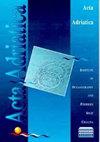Assessment of PCBs and OCPs in anchovy (Engraulis encrasicolus) and sardine (Sardina pilchardus) from theAdriatic Sea, Bay of Herceg Novi (alongside Kumbor Marine Channel)
IF 0.6
4区 生物学
Q3 MARINE & FRESHWATER BIOLOGY
引用次数: 0
Abstract
This manuscript presents research on six (6) Polyclorinated biphenyls (PCBs): PCB 28, PCB 52, PCB 101, PCB 138, PCB 153, PCB 180 and twenty-three (23) Organochlorine Pesticides (OCPs) in anchovy (Engraulis encrasicolus) and sardine (Sardina pilchardus), from the Adriatic Sea, Bay of Herceg Novi (alongside Kumbor marine channel). Polychlorinated biphenyls (PCBs) have been syn-thesized for the first time in 1866 and their production at the industrial level began in 1929. Intensive manufactured have been since 1939 and their exports as chemicals and products have taken place literally in every country in the world. However, the distribution of PCBs in the environment and thus in the food chains were unknown until 1966 when it were identified in human and wildlife. Despite production discontinuation in a number of countries since the mid-1970s and early 1980s, PCBs are still pollutants of major international concern. All analyzed samples contained different concentrations of PCBs and among these congeners #153, #138, #180 and #101 were the most present regarding intensification. Concentration of the analyzed PCBs in anchovies’ samples (lipid content) decreased in the subsequent order: PCB153> PCB 138> PCB180> PCB101> PCB52. The grade of PCBs concentration in homogenized ancho-vies samples decreased in the same way: PCB 153> PCB 138> PCB >180 > PCB 101> PCB 52, as well as in sardine homogenized samples and in sardine lipid content, they appear in relation to quantity in the same order. Concentration of PCB 28 shows the same value in the all analyzed samples (<10).Herceg Novi湾亚得里亚海(沿昆伯海峡)鳀鱼(Engraulis encrasicolus)和沙丁鱼(Sardina pilchardus)中多氯联苯和OCPs的评估
本文介绍了六(6)多氯联苯(PCB): PCB 28, PCB 52, PCB 101, PCB 138, PCB 153, PCB 180和23(23)有机氯农药(OCPs)在亚得里亚海,Herceg Novi湾(沿康布尔海洋通道)的凤尾鱼(Engraulis encrasicolus)和沙丁鱼(Sardina pilchardus)中的研究。多氯联苯(PCBs)于1866年首次被合成,1929年开始工业化生产。自1939年以来,集约化生产一直在进行,它们作为化学品和产品的出口几乎发生在世界上的每个国家。然而,直到1966年在人类和野生动物中发现多氯联苯,人们才知道多氯联苯在环境中的分布,从而在食物链中分布。尽管自1970年代中期和1980年代初以来,一些国家已停止生产多氯联苯,但它仍然是国际上主要关注的污染物。所有分析的样品都含有不同浓度的多氯联苯,在这些同系物中,#153、#138、#180和#101的强化程度最高。凤尾鱼样品中所分析的多氯联苯浓度(脂质含量)依次为:PCB153> pcb138 > PCB180> PCB101> PCB52。匀浆凤尾鱼样品中多氯联苯的浓度等级也以同样的方式下降:PCB 153> PCB 138> PCB >180 > PCB 101> PCB 52,以及在沙丁鱼匀浆样品和沙丁鱼脂含量中,它们与数量的关系呈现出相同的顺序。PCB 28的浓度在所有分析样品中显示相同值(<10)。
本文章由计算机程序翻译,如有差异,请以英文原文为准。
求助全文
约1分钟内获得全文
求助全文
来源期刊

Acta Adriatica
生物-海洋与淡水生物学
CiteScore
1.60
自引率
11.10%
发文量
13
审稿时长
>12 weeks
期刊介绍:
Journal "Acta Adriatica" is an Open Access journal. Users are allowed to read, download, copy, redistribute, print, search and link to material, and alter, transform, or build upon the material, or use them for any other lawful purpose as long as they attribute the source in an appropriate manner according to the CC BY licence.
 求助内容:
求助内容: 应助结果提醒方式:
应助结果提醒方式:


